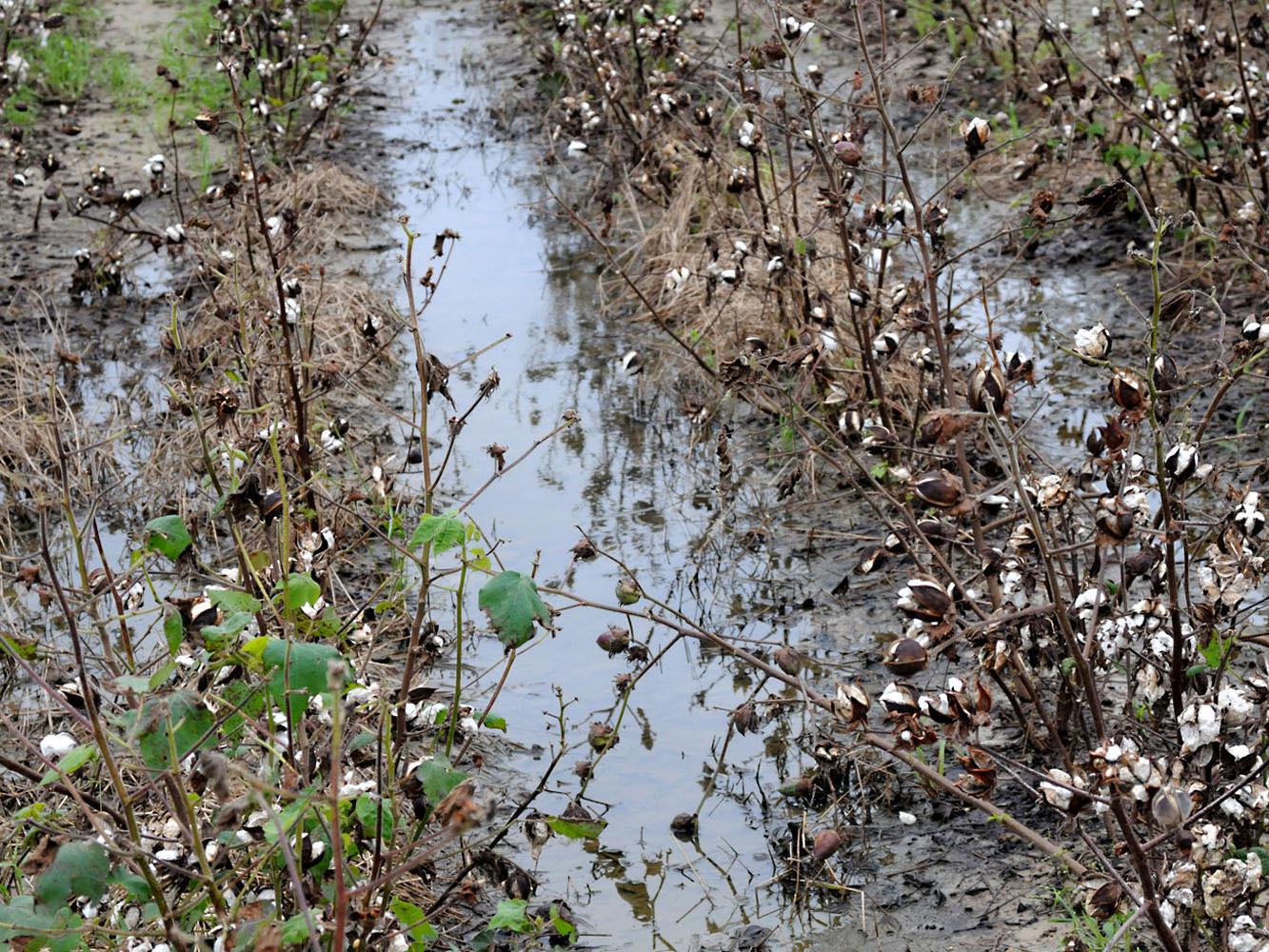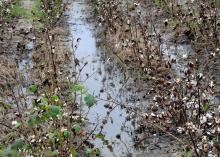Information Possibly Outdated
The information presented on this page was originally released on October 23, 2009. It may not be outdated, but please search our site for more current information. If you plan to quote or reference this information in a publication, please check with the Extension specialist or author before proceeding.
Insurance can salvage some lost crop value
MISSISSIPPI STATE – Near-constant rains during harvest-time cost Mississippi farmers an estimated $371 million in losses, and producers with crop insurance may be the only ones able to salvage much more from the fields this year.
John Michael Riley, an agricultural economist with the Mississippi State University Extension Service, said harvest had just begun for much of the state’s crops when fall rains began. Cotton is expected to take the biggest hit, losing 43 percent of its potential value. Most corn was harvested before the rain, but only half the soybeans were harvested when the crop should have been nearly 80 percent complete.
“Total losses for row crops are expected to be around 23 percent of the potential value of the crop,” Riley said.
About 3.4 million acres of Mississippi cropland were insured this year. This number includes acreage planted in minor crops as well as major row crops. The state has almost 3.6 million acres of major crops.
“At this time, those producers who did not sign up for insurance have no options to mitigate their risks,” Riley said. “If they are not insured, they will have to absorb these losses with current operating capital, which will be tough given the already stressful economic environment.”
Riley said about the same percentage of Mississippi farmland is insured each year, and this year’s 3.4 million acres is just 3 percent above the five-year average. The many policies offered for crop insurance provide varying levels of coverage.
“The two major insurance products used, Actual Production History, or APH, and Crop Revenue Coverage, or CRC, account for 99 percent of the insured acres,” Riley said. “These products cover anywhere from 50 percent to 75 percent of the crop. The famer decides on the level of coverage desired.”
Soybeans are taking the worst dollar-value hit with an estimated 30 percent loss, a value of $212 million.
“The majority of Mississippi’s 2.2 million acres of soybeans were near or at maturity when the wet weather began nearly six weeks ago,” said Trey Koger, Extension soybean specialist. “As a result, a significant amount of this acreage has not been harvested.”
Of the major row crops, cotton’s 43 percent loss is the largest. When cotton and cotton seed’s lost value is totaled, cotton farmers may see $82 million less than expected.
“Environmental conditions in 2009 have proven to be the most difficult that many growers have ever experienced,” said Darrin Dodds, Extension cotton specialist.
Estimates are that half the state’s sweet potato harvest is ruined, costing growers $34.6 million in lost revenue. Rice is taking a much lighter hit of 8 percent yield loss, but this is expected to add up to $25.7 million in lost value.
Corn losses are expected to reach $12.3 million on a 15 percent yield loss. Peanuts were not ready for harvest when the rains began, and no acres are expected to be abandoned. Losses for this crop are anticipated at 20 percent and $2.7 million.
Grain sorghum is expected to take the largest percentage loss of Mississippi’s major crops. The crop was 46 percent harvested by Sept. 20 when rains began, and all acres left unharvested were abandoned. MSU agricultural economists predict a $2 million loss for this crop.
Barry Barnett, Mississippi Agricultural and Forestry Experiment Station professor of agricultural economics, said this year’s crop failures point to the importance of crop insurance.
“A decision not to purchase crop insurance is, in essence, a decision to self-insure the crop,” Barnett said. “In making plans for next year, growers need to consider carefully how another year of severe yield losses would affect the financial viability of the farm.
“Crop insurance will not cover 100 percent of a grower’s yield loss, but a crop insurance payment can be the difference between being forced out of business and surviving until the next growing season,” he said.
Information from the MSU Extension Service on crop damage and losses, as well as the status of the state’s major row crops, is available online at msucares.com.






